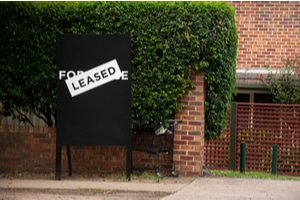Please fill out the details below to receive information on Blue Wealth Events
"*" indicates required fields

Since the onset of the coronavirus pandemic, much commentary has surrounded rental vacancies in our inner cities. Consider our four largest capitals. SQM Research data indicates that Sydney’s vacancy rate reached a high of 16.2 percent in May, Brisbane reached 14 percent in June and Melbourne 10.8 percent in September. Perth, on the other hand, actually experienced higher vacancy rates last year.
Vacancy rates in our CBD postcodes have differed substantially to adjacent suburbs. This information has been reported a whole lot less. Take Brisbane, for example. New Farm’s postcode (4005) reached a peak vacancy rate of 3.3 percent in April this year. That’s lower than it had been for the majority of the six years between 2013 and 2018. New Farm is to the east of Brisbane CBD, with the two postcodes meeting at the city’s iconic Story Bridge. A similar story exists directly across the Brisbane River, where the postcode of 4171 (Bulimba and Hawthorne) hasn’t seen a vacancy rate in excess of 2.7 percent this year.
Something similar has also unfolded in Melbourne, the hotbed of our second coronavirus spike. The renowned suburb of Richmond experienced an upswing in vacancies this year, but so far it has only reached as high as 4.1 percent—a stark contrast to the CBD vacancy rate of 10.8 percent. In Ascot Vale, just to the north of Flemington racecourse, the vacancy rate is just 3.6 percent.
These remarkable contrasts in vacancy rates across such minuscule distances warrant further thought. For instance, how could it be that living on the east side of Brisbane’s Story Bridge results in a vacancy rate at a fraction of those to the west? For that, we can turn to data from the most recent census.
For starters, the age distribution of the two postcodes are worlds apart. While New Farm’s median age is consistent with the state median of 37 years, Brisbane CBD boasts a youthful median of 29 years. What could be the potential cause of such a youthful population? You’ve probably guessed it (or heard it in the media): university students.
Almost half of the entire population of Brisbane CBD attend university. If you add vocational students (e.g. TAFE), that ‘almost half’ figure becomes ‘more than half’. By comparison, just a quarter of New Farm’s residents are attending university and less than 5 percent are attending vocational education. As a result, data from the most recent census shows that a quarter of all Brisbane CBD households lived elsewhere a year earlier, compared to 19 percent in New Farm. Both suburbs have a transient population, but Brisbane CBD’s even more so. According to the last census, less than a third of Brisbane CBD’s usual population were born in Australia. In Melbourne CBD, Australian-born residents represent just 20 percent of the total. With shorter-term expats encouraged to return home during the pandemic and a lack of new international students arriving at our empty airports, it’s no surprise our CBD postcodes are acting so differently to their surrounding inner-city suburbs.
